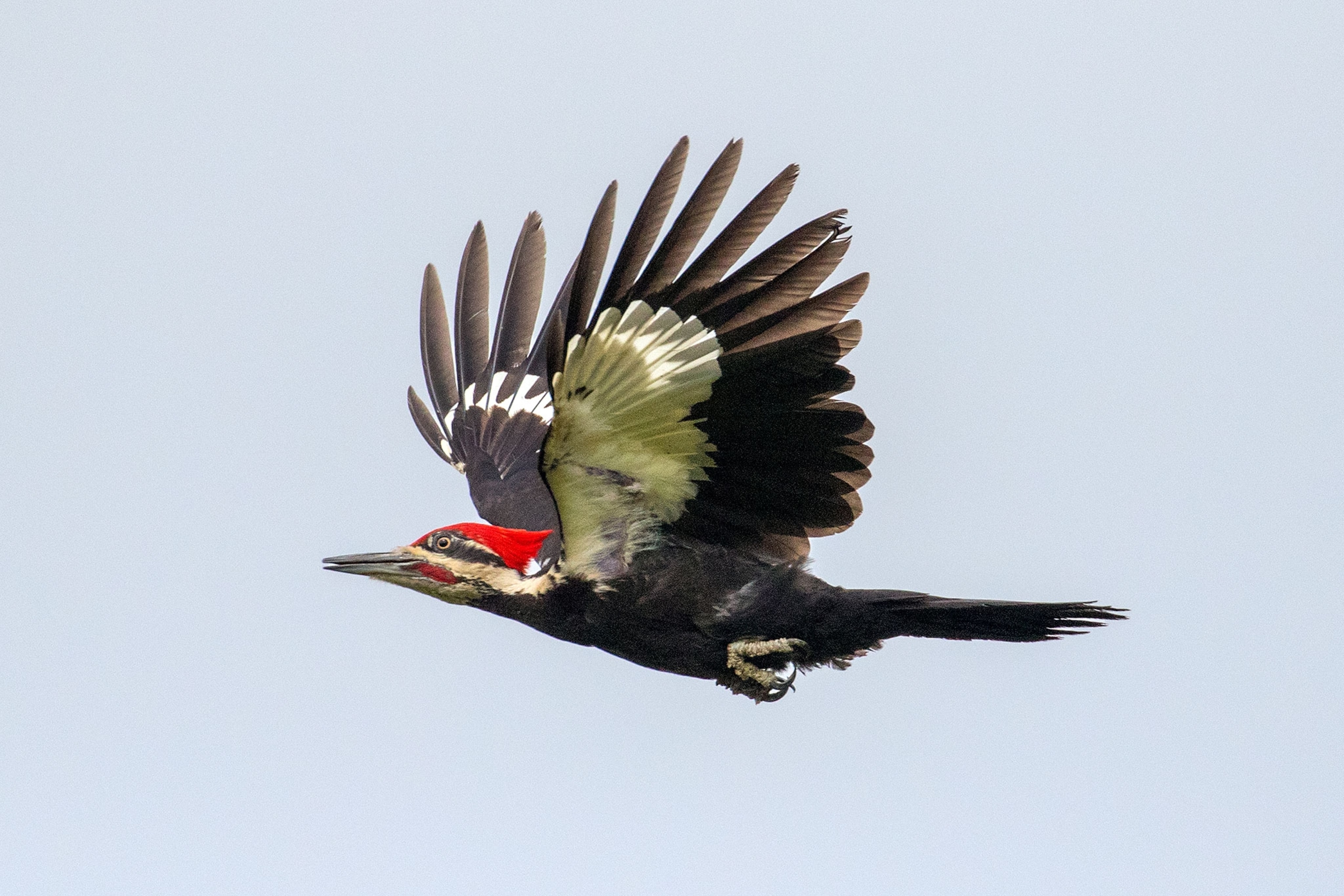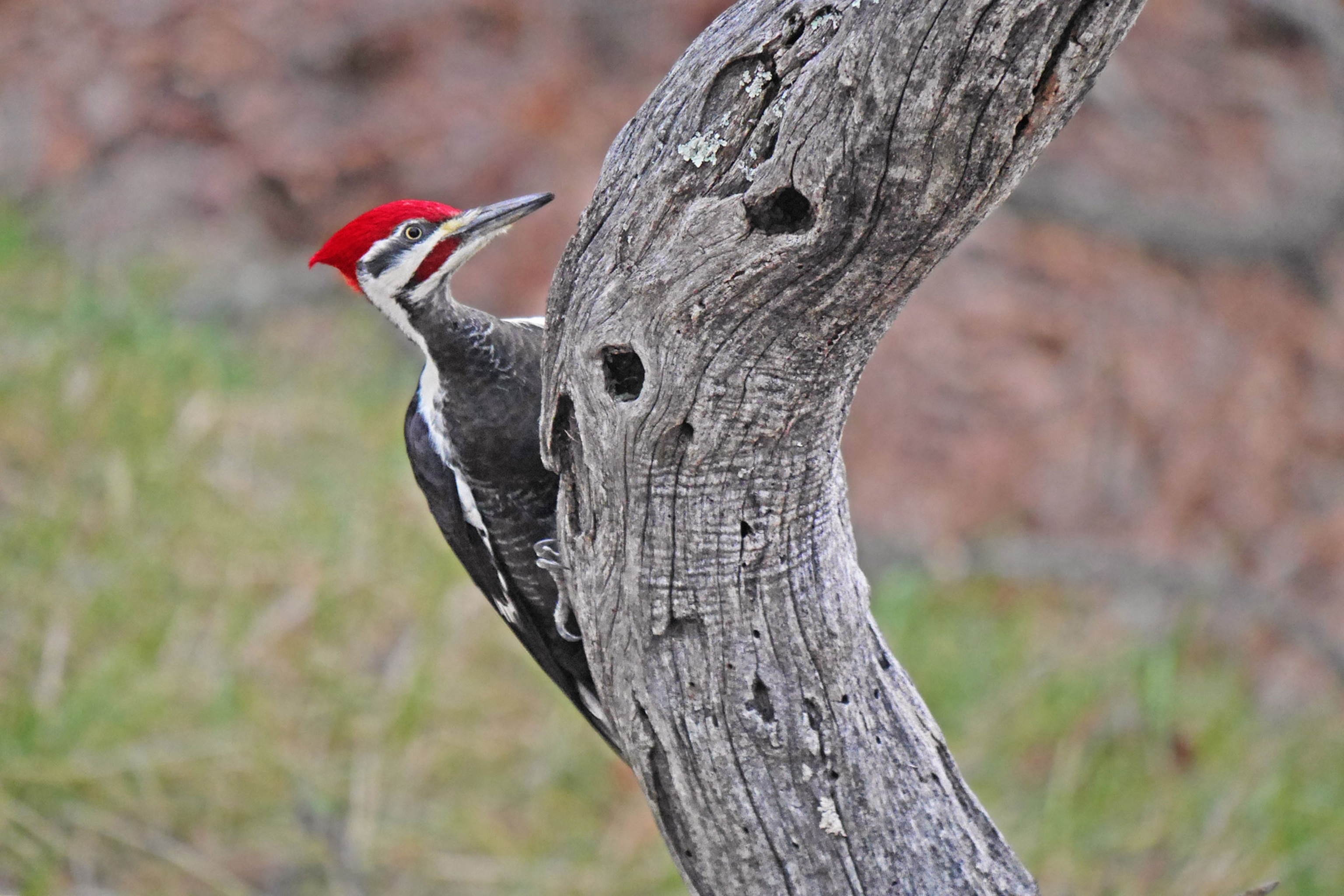While woodpeckers aren’t known for singing melodious songs, the drumbeat they produce slamming their bills into trees is one of the more recognizable sounds in nature. But their rat-tat-tat is slowly becoming less common in North America.
The two largest woodpeckers on the continent, the ivory-billed and imperial woodpeckers, likely went extinct in the twentieth century, though some hold out hope that a few individuals may yet survive. The next biggest is the pileated woodpecker, Dryocopus pileatus.
While the red-mohawked birds are listed by the International Union for the Conservation of Nature as a species of "least concern," some researchers wonder about how urban development may impact their long-term survival. That’s because they rely so heavily on undisturbed forests—or so it was thought.
"Woodpeckers in general are very sensitive to land transformation," says biologist Jorge Tomasevic, research coordinator for the Chile-based Río Cruces Wetland Center. Pileated woodpeckers depend on dead trees to excavate their nests. But retaining dead trees in developed areas can be tricky, Tomasevic says, because they pose a liability.
"You don't want to build a house next to a tree that is going to fall on you… or damage property," he explains.
When he was a graduate student at the University of Washington, Tomasevic wanted to see how much urbanization pileated woodpeckers could withstand. Between 2009 and 2012, he and his team captured 16 adult woodpeckers at nine sites around Seattle with varying levels of forest cover and urban development and outfitted them with small radio trackers.
He discovered that pileated woodpeckers can indeed thrive in the suburbs, so long as tree cover remains above twenty percent, and as long as there are some large dead trees available for nesting. They were perfectly happy excavating nest cavities in suburban backyards, as long as the tree or branch was dead.

The problem with drilling holes in living trees is that they heal, while a cavity excavated into a dead tree will remain, Tomasevic says. And while it makes sense to remove dead trees and branches that could endanger lives or property, there are places that can sustain dead trees that pose little to no threat, like parks, easements, rights-of-way, and even sometimes in large backyards. And new developments ought to be planned to allow for the retention of at least twenty percent of the original forested land, he says.
Maintaining woodpecker habitat facilitates the survival of a wide variety of other critters.
"Their presence, and their ability to drill into a tree, supports the nesting behavior of lots of other species," says Wake Forest University biologist Matthew Fuxjager, who was not involved in the study, which was published in The Condor. Small owls, swifts, bluebirds, swallows, wrens, and even some ducks all depend on cavities excavated by woodpeckers for nesting or roosting. Some mammals, like squirrels, use them as well.
Effective biodiversity conservation can no longer depend on protected areas alone, due to growing human populations and dwindling habitat. Thoughtful urban planning can promote the interests of wildlife while also keeping people safe. And large suburban green spaces can be managed for woodpeckers, says Tomasevic, by including common trees like bigleaf maple, red alder, and Douglas fir.
"You just need to leave [some] dead trees alone," he says.






































